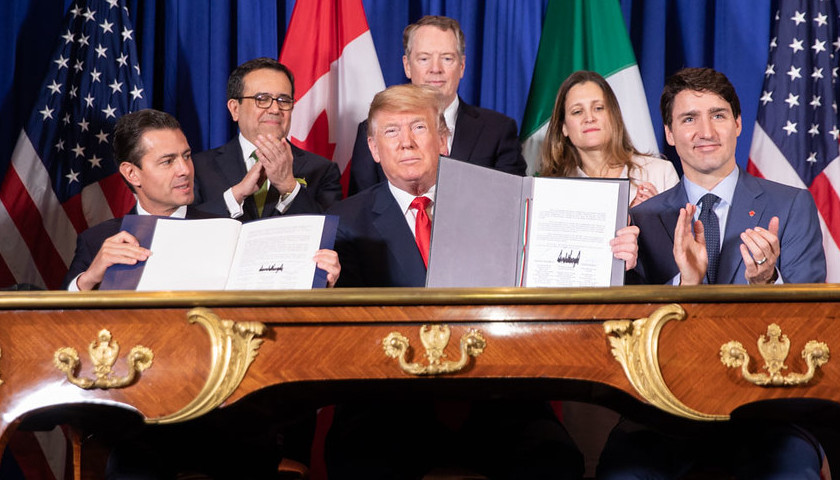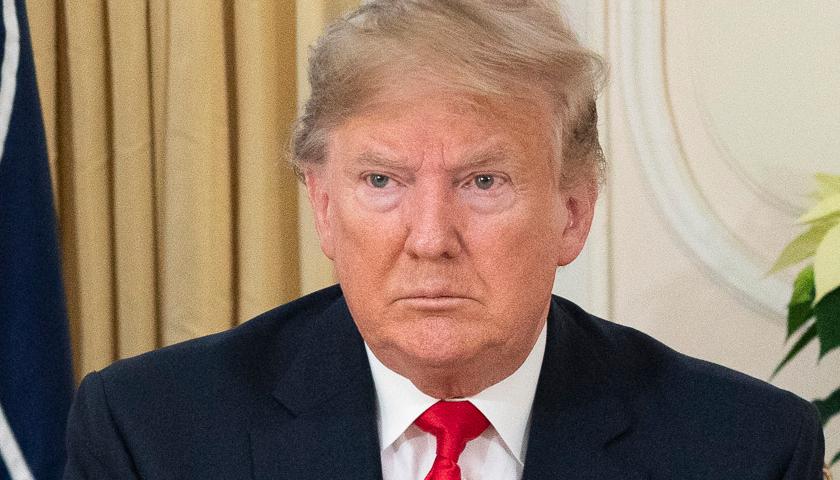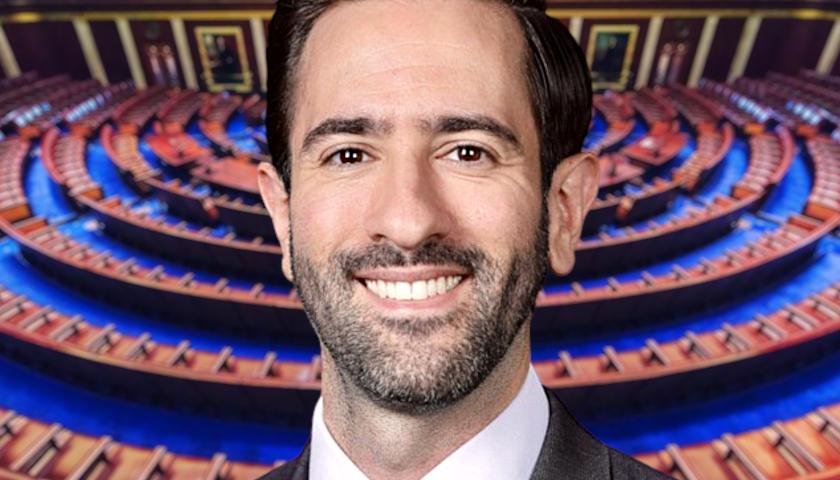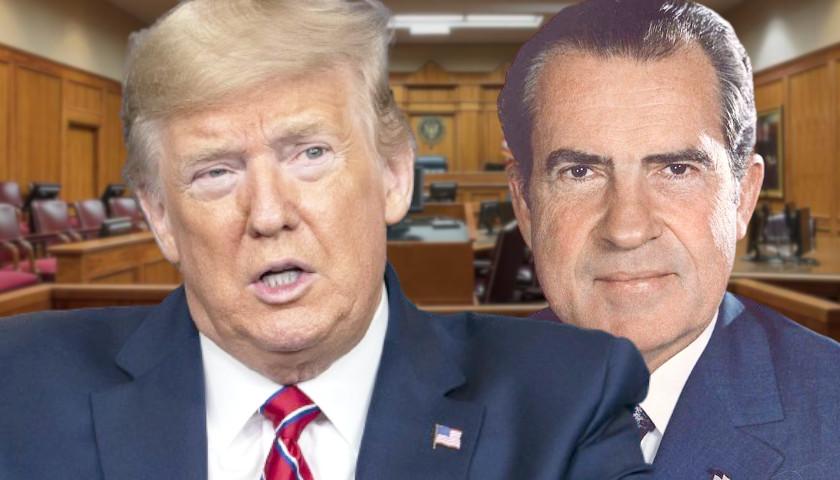by Robert Romano
President Donald Trump was elected in 2016 on the very important promise of implementing an America first posture on trade, promising to renegotiate the North American Free Trade Agreement (NAFTA) with Mexico and Canada, and to begin to restore hundreds of billions of trade balances with China using pressure and tariffs China after more than a decade of being treated unfairly.
President Trump succeeded on both counts, winning adoption of the U.S.-Mexico-Canada Agreement (USMCA) earlier this year and achieving the first ever U.S.-China trade deal that was completed right before the COVID-19 pandemic became public knowledge.
On Jan. 16, the Senate adopted the USMCA 89 to 10 following House passage on Dec. 19, 2019, 385 to 41.
In March, Canada finalized ratification of the new trade agreement, almost a year after Mexico did so in June 2019 — and now on July 1 it is set to take effect.
Trump used a combination of tariff threats and leaving NAFTA altogether in order to bring Canada and Mexico to the table, and ultimately to win adoption of the trade deal by Congress. On Dec. 1, 2018, he said, “I’ll be terminating it within a relatively short period of time. We get rid of NAFTA. It’s been a disaster for the United States… And so Congress will have a choice of the USMCA or pre-NAFTA, which worked very well…”
Which, that is Trump’s art of the deal. You have to use your leverage. He did, and it worked as now NAFTA is history. The same applies with China, where Trump was able to win an historic agreement even while leaving existing tariffs of 25 percent on $250 billion of goods and another 7.5 percent on the remaining $300 billion of goods.
In the USMCA, there has been a clear shift in terms of putting America first.
Country of origin requirements are being increased to 75 percent, up from 62.5 percent, requiring automobiles will have at least three-quarters of their parts made in North America.
Mexico will recognize the right of collective bargaining and all parties agreed that “40-45 percent of auto content be made by workers earning at least $16 per hour,” according to the U.S. Trade Representative. In 2016, average pay in Mexico for manufacturing was $3.91 an hour and so the shift was a huge concession to remove Mexico’s labor cost advantage.
On agriculture, Canada is allowing in greater access for U.S. dairy products.
On currency, the USMCA “address[es] unfair currency practices by requiring high-standard commitments to refrain from competitive devaluations and targeting exchange rates, while significantly increasing transparency and providing mechanisms for accountability,” according to the U.S. Trade Representative.
Since 2008, the Mexican peso has depreciated against the U.S. dollar by 50 percent, from $0.10 per $1 USD to $0.04 per $1 USD. Now, under the trade deal, currency devaluation is an unfair trade practice, This mirrors provisions in the phase one trade deal with China. In fact, including currency in the USMCA is what gave U.S. Trade Representative Robert Lighthizer the leverage to negotiate them from Beijing, too.
On intellectual property, cross-border copyrights, trademarks and patents will be enforceable to cut back on knock-offs, plus additional protections for pharmaceutical and agricultural producers.
On financial services, U.S. financial services will be allowed to compete with local financial services in Canada and Mexico, getting most-favored nation treatment.
On textiles, the agreement will “[p]romote greater use of Made-in-the-USA fibers, yarns, and fabrics by: [l]imiting rules that allow for some use of non-NAFTA inputs in textile and apparel trade… [and by] [r]equiring that sewing thread, pocketing fabric, narrow elastic bands, and coated fabric, when incorporated in most apparel and other finished products, be made in the region for those finished products to qualify for trade benefits,” according to the U.S. Trade Representative.
Overall, President Trump and his trade team have kept their eye on the ball on the USMCA and China trade deals, and with USMCA implementation beginning on July 1, the American people will begin to enjoy the fruit of these efforts as the U.S. begins to rebound from the COVID-19 recession. Trump promised he would put America first on the trade and for once a U.S. President has delivered on his promises— and it’s about time.
– – –
Robert Romano is the Vice President of Public Policy at Americans for Limited Government.








